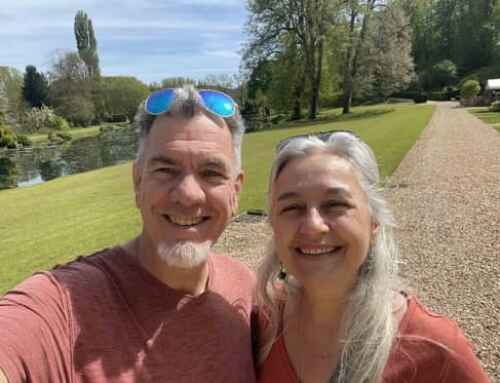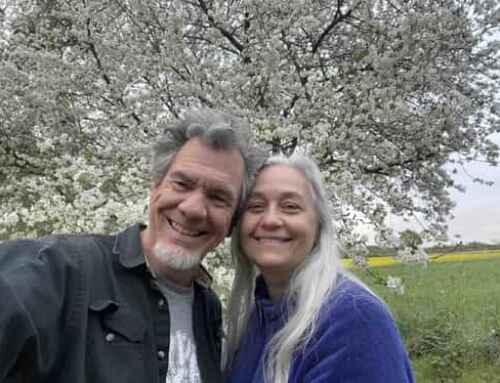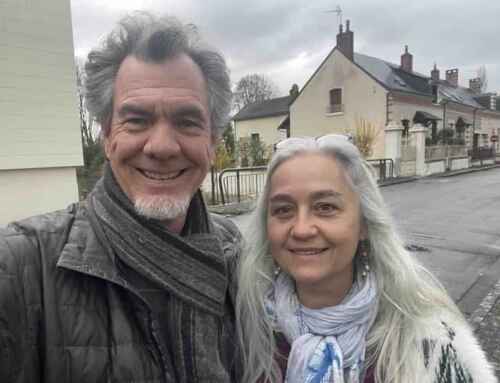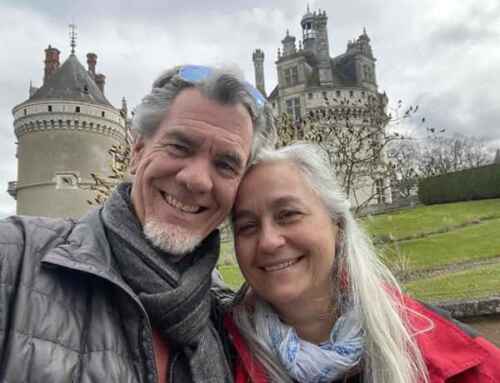[vc_row][vc_column][vc_single_image image=”24888″ img_size=”full” style=”vc_box_shadow_3d” css_animation=”flipInY”][vc_custom_heading text=”“Bad politicians are sent to Washington by good people who don’t vote.”
~William E. Simon.” font_container=”tag:h2|font_size:20|text_align:left” google_fonts=”font_family:Montserrat%3Aregular%2C700|font_style:700%20bold%20regular%3A700%3Anormal” css_animation=”bounceInLeft”][vc_column_text]Are you registered to vote? Do you have a plan for getting to the polls? Were you fortunate enough to be able to vote early or by mail?
I was all set to talk about creativity, education, and entrepreneurship today, but I decided to keep that topic up my sleeve for another Monday due to the 800-pound-gorilla in the room that is tomorrow’s election.
By all accounts, early voting turnout is off the charts across-the-board nearly everywhere in the country. It feels like this election is a referendum on the value of democracy itself as much as any of the issues or candidates.
For those of you who are citizens of the USA, you’re probably pretty familiar with this dance of democracy that happens every other year. Every four years we decide who gets to be president, here in the mid-term we choose new congressional representatives and decide on a variety of ballot measures.
It’s a pretty simple two-step do-si-do really. Would-be leaders campaign, we vote. It’s so simple in fact, that all too many people take the process for granted. There’s any number of warts and wrinkles with the various systems used around the country, from hackable electronic voting machines with no auditable paper trail to remote polling locations and illogical voter ID laws.
But imperfect though it may be, it’s the only system we’ve got, and the only way to improve it is by participating! One inspiring feature of this year’s election is the record number of both women and scientists who have stepped up to serve.
Looking at democracy through the levels of consciousness lens is revealing. The book “Power vs Force” by David Hawkins is an apt metaphor for the process. We the voters at the grassroots of democracy actually wield the power. Authoritarians cling to their control through the use of force. Societies that emerge from broad voter participation look far different than those that are dictated from the top down.
So in the spirit of their self interest, less-than-ethical leaders would like you to believe that your vote doesn’t matter. Not voting is a sure-fire vote against your own self interest, no matter how you look at it. When you opt-out of voting, all you are doing is disenfranchising your own demographic.
We are actually pretty lucky in this country. It’s a privilege to have our leaders beg us to keep their jobs, and for us to not have to pick up arms and go to war with one another to decide who gets to be in charge. Think about it, if your vote didn’t matter would they spend that much money on ads and the flyers that fill your mailbox?
Another way of looking at it is that to participate in the process is to show respect to your ancestors. To say that you don’t have time or it’s annoying or it’s tedious and you can’t be bothered is an outright dis to those who gave their lives so that you could have the right to a free and fair election.
The heartbreaking history of the civil rights era is a reminder of how far we’ve come and the price people paid to get here. Reverend George Lee and Lamar Smith, Mississippi, 1955. Herbert Lee andMedgar Evers, 1961. Louis Allen , James Chaney, Andrew Goodman, and Mickey Schwerner, 1964. Jimmie Lee Jackson , Bostonian Unitarian minister Reverend James Reeb, Episcopalian seminary student Jonathan Daniels , and mother-of-five Viola Luizzo, 1965. Grocery store owner Vernon Dahmer, 1966. The list goes on and on…
These are just a few of the folks from that era who were assassinated simply because they were helping people register to vote. I would imagine that their grandkids don’t take it for granted. The road to today’s peaceful elections is paved with the pain of the past.
I recently talked about this with my older daughter in Australia, where they have very high rates of participation in their elections. The way it works there is that voting is optional, but registering is not. It’s absolutely mandatory to be registered to vote, failing to do so earns you a stiff fine come tax time. Since nearly everyone is registered, most people go ahead and vote. (It’s easy to register or check your registration here in the USA, simply text the word ‘vote’ to 50409 andResistBot will do the work for you!)
Here in the USA we have a patchwork of different systems, (many inexplicably administered by private companies with little oversight!). So you may have to wait in line, or otherwise be inconvenienced in some way in order to cast your ballot. If you have to use a touch screen and are crossing your fingers that the vote you cast is the one they count, here’s a tip sheet to take with you to the polls , and agreat article here on this subject by election integrity expert Jennifer Cohn.
Here in my precinct in California, I consider myself lucky. My ballot comes in the mail, I’ve got three weeks to figure it out at my leisure and either mail it back in or drop it off. It’s hand-marked, it’s paper, and I’m confident my vote is counted. Having the luxury of sitting down in front of my computer to do research on every obscure judge, school board appointment, or ballot measure was a first for me, I’ve never felt so well-informed!
I talked to some younger folks the other day, and encouraged them to give it a go even if they were unsure about some things. Many a time in years past I’ve gone into the voting booth with possibly a cheat sheet on the candidates and the major ballot measures, and simply had to guess or leave things blank on the parts I had no idea about.
But even a partially informed vote is better than no vote at all. One way to look at it is that if you don’t vote, you don’t have the right to complain or have an opinion afterwards. Keeping your head in the sand might seem comfortable, but there’s nothing to lose by putting your two cents in. Democracy is a participatory process, you don’t get to dance if you’re not willing to step out onto the floor.
By this time next week, we will know which way the wind is blowing. Fear can be used as a motivating force, but in the long run love has more power. Regardless of how it all turns out, don’t give up on the process, and don’t take your dance with democracy for granted!
Much love till next week!
M+
Mark Metz
Director of the Dance First Association
Publisher of Conscious Dancer Magazine[/vc_column_text][vc_custom_heading text=”Dance First Member Marketing Resource – Ontraport!” google_fonts=”font_family:Montserrat%3Aregular%2C700|font_style:700%20bold%20regular%3A700%3Anormal” css_animation=”bounceInLeft”][vc_single_image image=”24889″ img_size=”full” style=”vc_box_shadow_3d” css_animation=”flipInY”][vc_column_text]This week’s Dance First Member Spotlight shines on a service worth sharing! One of the things we do for our Dance First members is help them navigate the world of marketing and messaging with the goal of building stronger practices. I often work with our members one-on-one, as well as in groups on the overarching philosophies of outreach and audience attraction.
So I thought it would be an interesting and helpful detour from our usual member spotlight to share some tips to our entire community and highlight one of our primary tools, Ontraport. One of the first things to remember when you’re growing your audience or building your practice, is that marketing is storytelling. Selling is persuasion, and that comes later, once people are engaged with your story.
Anything you can do to be more consistent and engaging with your storytelling is going to help you a lot. Maybe you think that your story is not that interesting? What makes you so special? Well, here’s a little secret. The mundane details of your day-to-day life don’t make good content. All those pictures of food on Instagram? Boring. Here’s what’s fascinating — a behind-the-scenes look into your creative process.
Where do you get your ideas? How do you develop your lessons? What anecdote from your childhood informs the work you do now? And don’t make it all about you — the insights you get from the folks you facilitate are the building blocks to your creativity, and are really interesting to your readers!
One big mistake I see people making all the time is putting all of their marketing eggs into the social media basket. I always ask clients how much time and energy they are putting into posting and promoting on Facebook etc, versus the amount of effort they’re putting into building an email list. All to often people have no list at all while they chase the vanity metrics of more likes and followers to exhaustion.
News flash: Vanity metrics don’t matter. They’re a sugar buzz that might make you feel good for a moment, but they have little impact on your bottom line. And all that content you post on a big social media platform? Guess what — they own it, you don’t. The people you’ve worked so hard to connect with there can be gone in a flash. The algorithm changes, the company is sold, your account gets hacked.
A list of email addresses however is yours and yours alone. It’s an asset you can take with you from platform to platform. You build equity in your practice as it grows. And think about how your mind works when you’re online. Email is one step away from your calendar and bank account, where decisions are made and money is spent. Social media is built for time wasting, you’re always just one cat video or ugly politician away from total distraction.
What do I recommend? Use your social media to build your mailing list. Look at your social streams like a garden that you can cultivate to harvest emails. Once you move people from being passive followers to active readers, you have a much more valuable online community. How to easily maintain an engaging newsletter and turn your fans into paid participants is a topic for another note, but for now, remember, the value is in the list.
That’s why I’m spotlighting our number one tool for list maintenance and online marketing, Ontraport. We’ve been with Ontraport for several years, and without a doubt they are the best list automation service out there. Obviously, when you’re first getting started you’ll probably start with a free service, (I recommend Mailchimp), but when it’s time for a more robust and full featured solution, Ontraport is where it’s at.
They’ve got the best customer service and support of any company I’ve ever worked with, and a library of tutorials and trainings that are basically like an internet marketing university. Besides sending newsletters, you can manage your entire database of contacts, create order forms, accept credit cards, host WordPress sites, manage orders, set up memberships, automate lesson plans, build if/then sequences, and much much more.
So there you have it! Today’s spotlight is a tip-of-the-hat to Ontraport, our number-one communications and member relationship resource! If you have any questions or want to know more, just hit reply and I’ll help you out![/vc_column_text][vc_column_text]
 |
 |
[/vc_column_text][/vc_column][/vc_row]





